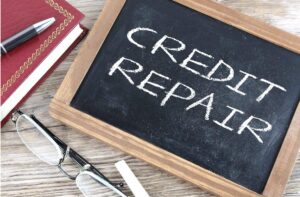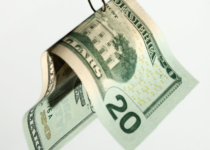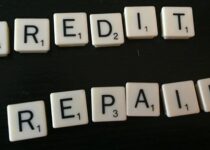Credit Repair DIY: A Step-by-Step Guide to Improving Your Credit Score

“This post may contain affiliate links. If you use these links to buy something we may earn a commission but you may gain some knowledge.”
A strong credit score is vital for financial success, opening doors to better loan rates, credit card approvals, and more. If you find yourself with a less-than-stellar credit score, fear not! Credit repair DIY is a proactive and empowering approach to improve your credit health. In this blog post, we’ll provide you with a comprehensive, step-by-step guide to tackle credit repair on your own and pave the way for a brighter financial future.
Step 1: Obtain Your Credit Reports
The first step in any credit repair journey is to obtain copies of your credit reports from the three major credit bureaus – Equifax, Experian, and TransUnion. You are entitled to one free report from each bureau every 12 months. Review these reports carefully for errors, inaccuracies, and negative items.
Step 2: Analyze Your Credit Reports
Once you have your credit reports in hand, thoroughly analyze each one for discrepancies and inaccuracies. Common errors include incorrect account information, duplicate entries, and outdated negative items. Make a list of the items you believe are inaccurate and need to be addressed.
Step 3: Dispute Inaccuracies
With your list of inaccuracies ready, initiate the dispute process with the respective credit bureaus. You can file disputes online, via mail, or by phone. Provide detailed explanations and any supporting documentation to bolster your case. The credit bureaus have 30 to 45 days to investigate and respond to your dispute.
Step 4: Pay Bills on Time
Consistently paying your bills on time is one of the most impactful ways to improve your credit score. Late payments can significantly impact your creditworthiness, so make it a priority to pay all bills by their due dates.
Step 5: Reduce Credit Card Balances
High credit card balances relative to your credit limits can negatively affect your credit score. Aim to keep your credit utilization ratio below 30%. Paying down credit card balances can have a swift and positive impact on your credit score.
Step 6: Avoid Opening Multiple New Accounts
While diversifying your credit mix can be beneficial, avoid opening multiple new credit accounts in a short period. Each credit inquiry can temporarily lower your credit score, so be strategic and cautious about new credit applications.
Step 7: Negotiate with Creditors
If you have past-due accounts or debts in collections, consider negotiating with your creditors. Many creditors are willing to work out payment arrangements or settle for less than the full amount to resolve outstanding debts.
Step 8: Establish Good Financial Habits
Building and maintaining good financial habits is essential for long-term credit repair. Create a budget, track your expenses, and save for emergencies to prevent future financial challenges.
Step 9: Check Your Progress Regularly
Credit repair is a gradual process, and it’s essential to monitor your progress regularly. Keep an eye on your credit reports and scores to track improvements and ensure that inaccuracies have been corrected.
Step 10: Be Patient and Persistent
Remember, credit repair DIY takes time and persistence. Improving your credit score is not an overnight process, but with consistent effort and responsible financial behavior, you can achieve significant results.
Additional Tips for Credit Repair Success
-
1.Beware of Credit Repair Scams
Avoid falling prey to credit repair scams that promise quick fixes or charge exorbitant fees for services that you can do yourself. Stick to reputable and legitimate DIY credit repair methods.
-
2.Utilize Financial Management Tools
Numerous online tools and mobile apps can help you manage your finances, track your credit score, and receive personalized credit improvement recommendations.
-
3.Educate Yourself
Stay informed about credit scoring factors and financial management by reading reputable articles, books, and attending financial workshops. The more knowledge you have, the better equipped you’ll be to navigate the credit repair process effectively.
-
4.Consider a Secured Credit Card
If your credit score is very low, consider applying for a secured credit card. Secured cards require a cash deposit as collateral, making them more accessible to individuals with limited credit history or past credit challenges.
Conclusion
Credit repair DIY empowers you to take control of your financial destiny and improve your credit score on your own terms. By following this comprehensive guide, you’ll be equipped with the knowledge and tools needed to address inaccuracies, establish responsible financial habits, and gradually boost your credit score. Remember, patience and persistence are key to credit repair success. With dedication and determination, you can pave the way to a brighter financial future and unlock the doors to better financial opportunities. Happy credit repairing!






2 Comments